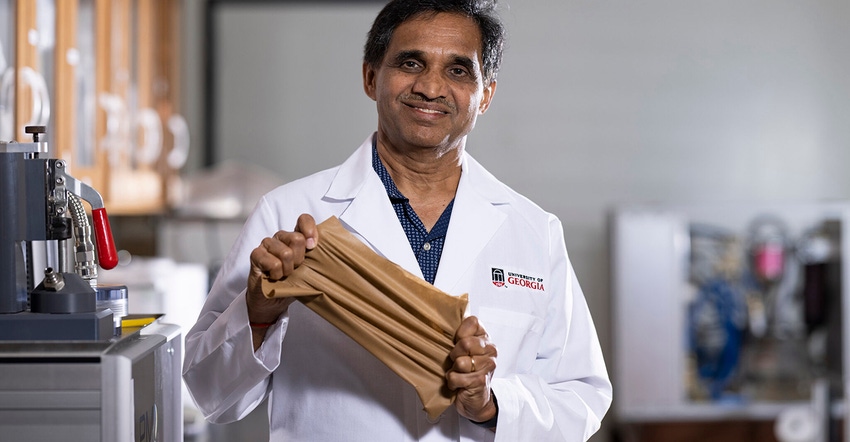Nonwoven Composite that Incorporates Cotton Eyes Medical Applications
The stretchable, breathable, and absorbent material is suited for the production of face masks, bandages, and related medical products.
July 26, 2021

A new nonwoven composite that is stretchable, breathable, and absorbent reportedly is a superior alternative to materials currently used to fabricate face masks, bandages, and similar medical products. The material was developed by University of Georgia researchers led Gajanan Bhat, head of the Department of Textiles, Merchandising, and Interiors in the College of Family and Consumer Services.
Cotton is incorporated in the nonwoven material to make it more comfortable on the skin. It also makes the material easier to compost, and, therefore, more sustainable compared with similar products currently in the market, writes Angela Hsiung on the University of Georgia’s news site. Cotton is a major crop in Georgia and an important part of the state’s economy. The US Department of Agriculture (USDA), which has been looking for new applications for cotton, funded the research.
The market for nonwoven fabrics is expected to reach a value of $77 billion in 2027, according to a report by Acumen Research and Consulting cited by Hsiung. Found in diapers, feminine hygiene products, and air and water filters, nonwovens are water-resistant, elastic, and breathable, and their ability to filter air makes them ideal for medical uses.
“Some of these products for biomedical applications, like Band-Aids and wraps, require some stretch and stretch recovery. But since these come in contact with the body, having cotton will be really helpful,” said Bhat. While cotton is not as stretchy as nonwovens, it is more water absorbent and softer, making it more comfortable to wear.
To test the performance of the composite materials, Bhat’s team combined cotton with two types of nonwoven fabrics — spunbond and meltblown. Spunbond nonwovens contain coarser fiber and are generally stretchier, while meltblown nonwovens contain finer fibers, which allow for better filtration ability, notes Hsiung.
To determine the best combination for a stretchable, breathable, and absorbent material, the researchers prepared nonwoven fabrics in different thicknesses and combined them with either one or two sheets of cotton fabric. They ended up testing 13 different combinations.
The tests showed that the composite fabrics had improved water absorbency compared to the original nonwovens, while still maintaining good breathability. The water absorption of the composites was three to 10 times higher compared with the cotton-free fabric. The composite materials also maintained the ability of nonwovens to recover from being stretched, allowing them to accommodate spontaneous movements without losing their shape.
The process of making composite nonwovens enables the use of lower-quality cotton and sometimes even waste or recycled cotton from t-shirts and bed sheets, said Bhat. The resulting products, therefore, are more sustainable and cheaper to produce, according to the researchers.
The study, co-authored by Bhat with master’s student and first author Partha Sikdar and PhD student Shafiqul Islam, is published in the Journal of Industrial Textiles. Additional co-authors include Doug Hinchliffe and Brian Condon, USDA Southern Regional Research Center.
About the Author(s)
You May Also Like


